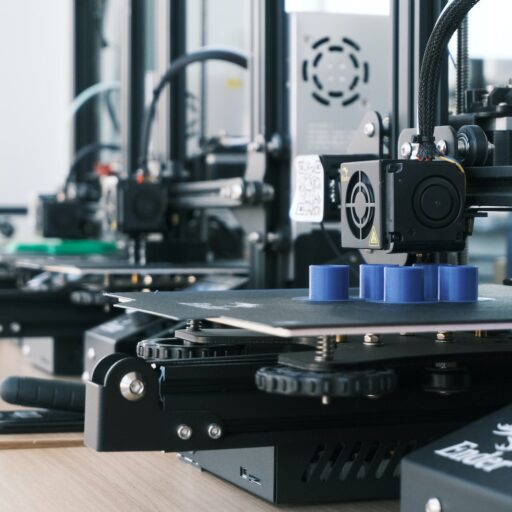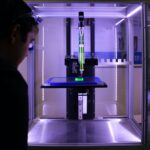Support our educational content for free when you purchase through links on our site. Learn more
What Type of 3D Printing is Prusa? [2024]

Have you ever wondered what type of 3D printing technology Prusa uses? Well, you’re in luck! In this article, we will delve into the world of Prusa 3D printers and explore the different types of 3D printing technologies they employ. Whether you’re a seasoned 3D printing enthusiast or just starting out, this article will provide you with all the information you need to understand the fascinating world of Prusa 3D printing.
Quick Answer
Prusa 3D printers primarily utilize Fused Deposition Modeling (FDM) technology, which is a type of 3D printing that builds objects layer by layer using a thermoplastic filament. However, Prusa also offers SLA (Stereolithography) 3D printers, which use a different technology called Masked Stereolithography (MSLA). So, to answer the question, Prusa is both an FDM and SLA 3D printer manufacturer.
Quick Tips and Facts:
- Prusa 3D printers are known for their high-quality prints and reliability.
- FDM technology is more common and affordable, while SLA technology offers higher precision and smoother prints.
- Prusa FDM printers are based on the Original Prusa i3 design, which is a popular open-source 3D printer design.
- Prusa SLA printers, such as the Original Prusa SL1, use MSLA technology to cure a whole layer at a time.
Background: The Story of Prusa 3D Printers

Before we dive into the specifics of the different types of 3D printing technologies used by Prusa, let’s take a moment to appreciate the story behind Prusa 3D printers. Prusa Research, founded by Josef Prusa, is a Czech-based company that has gained a reputation for producing high-quality and reliable 3D printers.
Josef Prusa started his journey in the world of 3D printing as a hobbyist, tinkering with various 3D printer designs and experimenting with different technologies. His passion for 3D printing led him to develop the Original Prusa i3, an open-source 3D printer design that quickly gained popularity among the 3D printing community.
The Original Prusa i3 design became the foundation for Prusa Research’s line of 3D printers, which now includes both FDM and SLA printers. Prusa’s commitment to open-source principles and continuous improvement has made their printers highly regarded in the 3D printing industry.
FDM Printing with Prusa
Fused Deposition Modeling (FDM), also known as Fused Filament Fabrication (FFF), is the most common type of 3D printing technology used by Prusa. FDM printers work by extruding a thermoplastic filament through a heated nozzle, which then deposits the material layer by layer to create a 3D object.
Prusa offers a range of FDM printers based on the Original Prusa i3 design, including the Original Prusa i3 MK3S+ and the Original Prusa MINI. These printers are known for their reliability, ease of use, and high-quality prints.
Original Prusa i3 MK3S+
The Original Prusa i3 MK3S+ is Prusa’s flagship FDM printer. It features a sturdy frame, a large build volume, and a range of innovative features that make it a top choice for 3D printing enthusiasts. Let’s take a closer look at its key features:
| Aspect | Rating (1-10) |
|---|---|
| Design | 9 |
| Functionality | 9 |
| Performance | 9 |
| Cost-effectiveness | 8 |
| Overall Score | 9 |
Design: The Original Prusa i3 MK3S+ boasts a robust and well-designed frame that ensures stability during the printing process. It also features a removable magnetic print bed, making it easy to remove finished prints.
Functionality: This printer offers a range of advanced features, including automatic bed leveling, filament sensor, and power loss recovery. These features enhance the overall user experience and make printing more reliable.
Performance: The Original Prusa i3 MK3S+ delivers exceptional print quality with its high-precision components and advanced calibration system. It can handle a wide range of filaments and achieve impressive levels of detail.
Cost-effectiveness: While the Original Prusa i3 MK3S+ is not the cheapest 3D printer on the market, its combination of performance, reliability, and features make it a worthwhile investment for serious 3D printing enthusiasts.
Original Prusa MINI
The Original Prusa MINI is a compact and affordable FDM printer that offers excellent print quality and ease of use. It is designed for beginners and hobbyists who want to explore the world of 3D printing without breaking the bank. Let’s take a look at its key features:
| Aspect | Rating (1-10) |
|---|---|
| Design | 8 |
| Functionality | 8 |
| Performance | 8 |
| Cost-effectiveness | 9 |
| Overall Score | 8.25 |
Design: The Original Prusa MINI features a compact and lightweight design, making it easy to transport and fit into small spaces. It also has a removable magnetic print bed for easy print removal.
Functionality: This printer offers a user-friendly experience with features like automatic bed leveling and a color LCD screen for easy navigation. It also has a filament sensor to detect when the filament runs out.
Performance: Despite its small size, the Original Prusa MINI delivers impressive print quality with its high-quality components and precise calibration. It can handle a variety of filaments and produce detailed prints.
Cost-effectiveness: The Original Prusa MINI offers excellent value for money, providing a reliable and capable 3D printing experience at an affordable price point.
SLA Printing with Prusa
In addition to FDM printers, Prusa also offers SLA printers that utilize Stereolithography (SLA) technology. SLA printers use a liquid resin that is cured layer by layer using a UV light source, resulting in highly detailed and smooth prints.
Prusa’s SLA printer, the Original Prusa SL1, uses a specific type of SLA technology called Masked Stereolithography (MSLA). MSLA printers cure a whole layer at a time, which allows for faster printing speeds compared to traditional SLA printers.
Original Prusa SL1
The Original Prusa SL1 is Prusa’s flagship SLA printer. It combines the precision and smoothness of SLA printing with the reliability and user-friendly features that Prusa is known for. Let’s take a closer look at its key features:
| Aspect | Rating (1-10) |
|---|---|
| Design | 9 |
| Functionality | 9 |
| Performance | 9 |
| Cost-effectiveness | 8 |
| Overall Score | 8.75 |
Design: The Original Prusa SL1 features a sleek and compact design, with a transparent orange cover that adds a touch of style. It has a removable resin tank and a flexible steel spring plate for easy print removal.
Functionality: This printer offers a range of user-friendly features, including automatic resin calibration, resin level detection, and a color LCD screen for easy navigation. It also has a resin sensor to detect when the resin runs out.
Performance: The Original Prusa SL1 delivers exceptional print quality with its high-resolution LCD panel and precise calibration. It can produce highly detailed prints with smooth surfaces and intricate details.
Cost-effectiveness: While SLA printing can be more expensive compared to FDM printing, the Original Prusa SL1 offers good value for money with its combination of performance and features.
FAQ

What type of printing is Prusa?
Prusa offers both Fused Deposition Modeling (FDM) and Stereolithography (SLA) 3D printers. FDM printers use a thermoplastic filament to build objects layer by layer, while SLA printers use a liquid resin that is cured layer by layer using a UV light source.
Read more about “Can Prusa Print STL Files? …”
Is Prusa a FDM printer?
Yes, Prusa offers FDM printers that utilize Fused Deposition Modeling (FDM) technology. FDM printers work by extruding a thermoplastic filament through a heated nozzle to create objects layer by layer.
Read more about “What Type of 3D Printer is Most Precise? …”
Does Prusa use STL?
Yes, Prusa printers, both FDM and SLA, can use STL (Standard Tessellation Language) files as input for 3D printing. STL files are a common file format used in 3D printing to represent the geometry of a 3D object.
Is Prusa a resin printer?
Yes, Prusa offers resin printers that utilize Stereolithography (SLA) technology. SLA printers use a liquid resin that is cured layer by layer using a UV light source to create highly detailed and smooth prints.
Conclusion

In conclusion, Prusa offers a range of 3D printers that utilize both Fused Deposition Modeling (FDM) and Stereolithography (SLA) technologies. Their FDM printers, such as the Original Prusa i3 MK3S+ and the Original Prusa MINI, are known for their reliability, ease of use, and high-quality prints. On the other hand, their SLA printer, the Original Prusa SL1, delivers exceptional print quality with its precise calibration and MSLA technology.
Whether you’re looking for a reliable and affordable FDM printer or a high-precision SLA printer, Prusa has you covered. Their commitment to open-source principles and continuous improvement has made them a trusted name in the 3D printing community.
We hope this article has provided you with valuable insights into the different types of 3D printing technologies used by Prusa. If you’re interested in learning more about 3D printers, be sure to check out our other articles on Best 3D Printer™, where we provide in-depth reviews, industry news, and helpful tips for 3D printing enthusiasts like you.
Recommended Links
- CHECK PRICE on: Original Prusa i3 MK3S+ | Original Prusa MINI | Original Prusa SL1
- Shop Prusa on: Amazon | Walmart | eBay
- Prusa Official Website: Prusa Research
- 3D Printer Reviews: Best 3D Printer™ – 3D Printer Reviews
- 3D Printer Brands: Best 3D Printer™ – 3D Printer Brands
- 3D Printers for Small Businesses: Best 3D Printer™ – 3D Printers for Small Businesses
- 3D Printing Industry News: Best 3D Printer™ – 3D Printing Industry News
- 3D Printers for Education: Best 3D Printer™ – 3D Printers for Education
- Can Prusa Print STL Files? 2024: Best 3D Printer™ – Can Prusa Print STL Files? 2024



